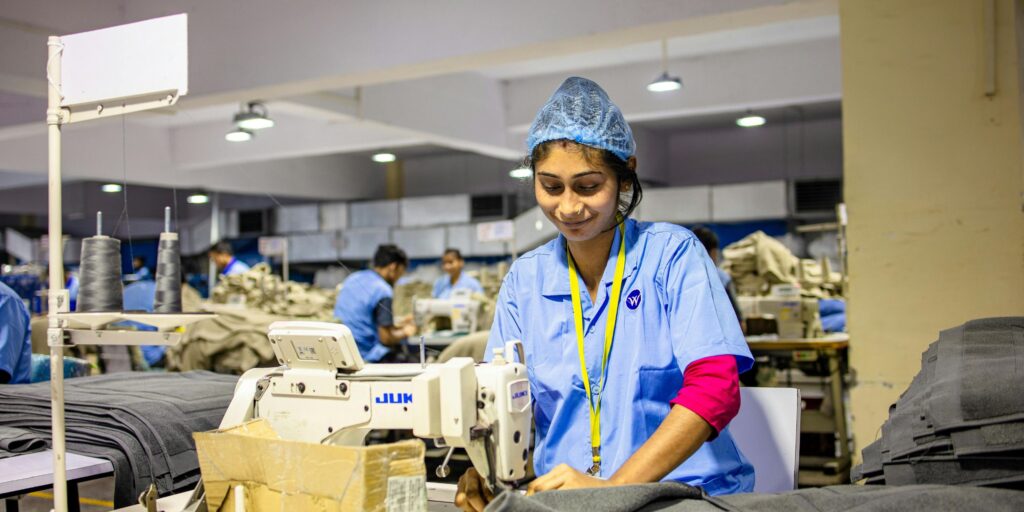Cut Lead Times Fast: How American Brands Use Tech Packs Effectively

Launching a clothing line is an exhilarating journey, especially for American fashion brands navigating an increasingly complex industry. A key challenge many face is the often-lengthy lead times—from first sketch to the store rack—that can slow down bringing fresh designs to eager consumers. But there’s a powerful tool that can transform this timeline: the tech pack. More than just a technical document, a well-crafted tech pack is the secret weapon that helps brands slash lead times, boost communication clarity, and maintain the quality and consistency that customers expect.
Let’s dive into how American brands can leverage tech packs to accelerate production, overcome industry-specific hurdles, and ultimately get their products to market faster—with a process that feels less like a slog and more like a streamlined creative adventure.
The American Apparel Landscape: Why Lead Times Matter
In today’s fast-paced fashion world, timing is everything. American brands often face unique challenges that can extend their production timelines. These include supply chain disruptions, tariffs on imports, labor shortages, and fluctuating production capacity domestically and overseas. On average, clothing production lead times can stretch anywhere from 8 to 24 weeks—or longer—depending on sourcing, factory schedules, and logistics.
Long lead times can mean missed trends, higher costs, and lost sales opportunities. For American brands competing with global fast fashion and niche specialists alike, cutting lead times is crucial for staying relevant and profitable.
What Is a Tech Pack—and Why Is It a Game Changer?
A tech pack is essentially the blueprint for your garment. It’s a comprehensive document that communicates every detail of your design to manufacturers—including sketches, materials, measurements, construction notes, trims, colorways, and packaging instructions. Think of it as the universal language that bridges the gap between your creative vision and the production team.
Why is it so powerful for reducing lead times?
- Clear Communication: A tech pack eliminates guesswork by providing exact specifications. This reduces back-and-forth between designers and factories, preventing costly errors and delays.
- Streamlined Sampling: Detailed tech packs enable factories to produce prototypes accurately the first time, slashing sampling cycles and accelerating approval processes.
- Efficient Scheduling: Manufacturers can plan manpower, materials, and production slots more effectively when armed with a complete tech pack, helping avoid bottlenecks.
- Global Collaboration: For American brands working with overseas factories or multiple vendors, tech packs ensure consistent quality and clear expectations despite time zones and language barriers.
Unique Challenges for American Brands and How Tech Packs Help
American fashion brands face some specific obstacles related to lead times:
- Tariffs and Import Delays: Recent tariff increases on imports from China (10%) and Mexico/Canada (25%) add cost and unpredictability. Accurate tech packs support domestic or nearshore manufacturing by reducing reliance on trial-and-error communication or costly errors during production.
- Material Sourcing Constraints: Many US factories rely on imported raw materials, which may have long lead times. A detailed bill of materials (BOM) in the tech pack helps secure the right fabrics and trims early to minimize delays.
- Labor Shortages and Capacity Limitations: Domestic factories often have limited capacity and skilled labor shortages. Tech packs make production more efficient, allowing factories to optimize resources and work faster without compromising quality.
- Need for Flexibility: With trends shifting quickly, American brands benefit from tech packs that can be digitally updated in real-time, enabling agile changes without causing production slowdowns.
Step-by-Step: How American Brands Can Use Tech Packs to Cut Lead Times
- Start with a Comprehensive Tech Pack Template
Ensure your tech pack covers all critical elements: flat sketches from multiple angles, precise measurements, material details, stitching instructions, labels, trims, and packaging specs. - Leverage Digital Tech Pack Software
Use modern platforms that allow real-time collaboration between your design and manufacturing teams. This reduces email chains, version confusion, and supports agile updates that keep timelines tight. - Create Clear and Precise Communication
Avoid vague terms; use standardized industry jargon and visual aids (line drawings, swatches). The more clarity, the fewer production hiccups. - Develop a Detailed Bill of Materials (BOM)
Specify exact fabrics, trims, threads, and hardware with supplier contacts. This helps factories order materials promptly, avoiding last-minute sourcing delays. - Include Tolerance and Quality Control Notes
Defining acceptable measurement variations upfront reduces rework loops and speeds up approvals during sampling and full production. - Standardize Your Tech Packs Across Collections
Consistency lets manufacturers become familiar with your standards, reducing mistakes in subsequent runs and allowing faster turnaround. - Build a Time & Action Calendar
Use your tech pack data to map out all production milestones—from sampling to delivery. Having this clear schedule enables proactive management of bottlenecks. - Choose the Right Manufacturing Partners
Work with factories experienced in tech pack utilization and who can handle your production scale. This synergy dramatically reduces miscommunication and delays. - Regularly Update and Improve Tech Packs
As you learn from each production cycle, refine your tech packs. They become ever more efficient tools that cut lead times progressively. - Use Tech Packs to Facilitate Nearshoring/Reshoring
Accurate tech packs empower American brands to explore domestic or nearshore production options, important in today’s trade and cost environment for faster turnaround.
The Broader Impact: Beyond Faster Lead Times
Using tech packs effectively doesn’t just speed up production—it improves overall product quality, brand consistency, and cost control. This critical investment in your pre-production process supports scalability, enabling your brand to grow while maintaining the high standards that customers demand.
Moreover, streamlined tech packs reduce waste by eliminating redundant sampling and material errors, supporting sustainability goals—a key consideration for many contemporary American brands.
Final Thoughts: Turning Your Designs into Reality—Faster
For American brands eager to move from sketch to store without unnecessary delays, mastering the tech pack is essential. It is the linchpin for faster, clearer, and more cost-effective production. By investing time upfront in creating detailed, adaptable tech packs and partnering with the right manufacturers, brands can cut lead times significantly.
It means reacting quicker to trends, reducing costs, and delivering fresh styles to doorsteps faster—critical advantages in a competitive marketplace. The right tech pack helps your vision become reality—not months later, but on time, every time.

